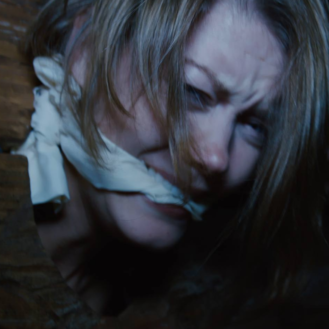Argentinian director Martín Kraut’s La Dosis (“The Dose”, in English) is a tight, engaging thriller that would be better off without the homophobic subtext.
La Dosis offers a fresh, suspenseful take on the killer nurse trope. Marcos (Carlos Portaluppi) has been an ICU nurse for twenty years. Though shy and introverted, he is also experienced and capable at his job. When a younger male nurse named Gabriel (Ignacio Rogers) begins working in the same ward and the number of patient deaths increases dramatically, Marcos becomes suspicious of his new co-worker.
There aren’t that many movies that focus on male nurses, especially ones who are not conventionally attractive. Marcos is overweight and Kraut doesn’t shy away from making the character’s size a part of the story. While by no mean’s Marcos’ defining characteristic (he is also brave, hardworking, socially reserved, and compassionate), I liked that La Dosis showed how Marcos’ body impacts both his relationship with others and the way he moves through the world. It is subtle, but it made the character and the story feel real. A good deal of the credit should go to Carlos Portaluppi, whose grounded performance is a nice contrast to Ignacio Rogers’ manic, more than a little unhinged, Gabriel.
Kraut makes clever use of windows and glass throughout the film. Frequently, the audience is only able to see the reflection of characters and actions. Telling details and identities are obscured in light and shadow, forcing the viewer to use their own imagination to fill in the gaps. It is a nice touch that not only increases the feeling of suspense, but also connects to broader themes of visibility and surveillance. Maybe I’m just too hung up on Foucault, but I couldn’t help noticing that the nurses’ station in the film is a textbook panopticon. While inside, Marcos and the other nurses can see all the patients at the same time and are able to monitor them. From the outside however, the patients are not able to see everything that the nurses are doing. Foucault thought that the panopticon offered a perfect model of how discipline can be maintained automatically through visibility: if people think they are being watched, but can’t see who is watching them, they will behave themselves without the people or person in authority needing to use force. A central theme in La Dosis is the patient-nurse relationship and the power that healthcare professionals have over the people in their care. Through the motif of windows and reflections, Kraut draws a link between visibility/invisibility as a means of building mystery and tension, and larger questions of discipline and surveillance.
While I found La Dosis to be a fun, immersive thriller, I did take issue with the way that the film coded the central villain as queer. I’m not trying to say that all queer characters need to be good, but the idea that queer people (particularly bisexual or pansexual folks) are “crazy”, violent “psychos” is an overused, and frankly homophobic, trope that perpetuates harmful stereotypes. I also didn’t feel it was built in as a necessary or even believable part of the character; it felt like an after-thought that was meant to establish the villain as a villain, and to justify Marcos’ feelings of repulsion. This didn’t ruin the movie for me, but I could see it putting some viewers off – or even outright offending others. At this point, conversations around stereotypes and representation in film have been going on for decades. A more nuanced, thoughtful approach is needed. Anything less is just lazy storytelling.
**********
Do You Tweet? Follow These Tweeple:
Shannon Page: @ShannonEvePage





Be the first to comment